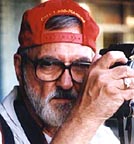|
|
|
|
Roger Williams HOW TO HAVE A
|
 |
|
It's only been a few decades since the first rudimentary FM-based cordless phones were introduced for consumer use. With modern computer technology, consumers have a wide range of security devices available to them. However, the buyer needs to know how to find the ultimate in range and reliable security. Without this security the phone user's conversations can easily be monitored and recorded. For instance, your checking account and credit card numbers, as well as other personal information can easily be picked up by unscrupulous eavesdroppers. Most cordless phone users are unaware that anyone with a police scanning device can sit outside a user's home and listen to the private two-way conversation going on. And the party being called may not be aware that the caller is using a cordless phone and thus subject to unknown monitoring. Armed with just a little technical information, however, any buyer can make decisions regarding a cordless phone purchase from the standpoint of security, increased range, and relatively low cost.
The Original Phone: 49 MHz When the mass-produced cordless devices were hooked to phone lines as wireless extensions, little thought was given to the eavesdropper. These units transmitted and received direct FM signals on a single frequency, between the government-assigned frequencies of 46.0 MHz and 49.995 MHz. Anyone with a scanner could eavesdrop. Even worse, someone with another cordless phone could be on the same frequency, and if close enough, could access the phone line of the original user to make calls which would be charged to the number of that original user's system. These phones sometimes have ten frequencies that are switchable. Anyone with one of these units can "cruise" the neighborhood, switching channels until a "live one" is found, and then use that person's phone to make a call (as soon as a dial tone is heard, the frequency is active and phone calls can be made and received using someone else's line). Unfortunately, fancy packaging surround
these Star Trek-looking devices and sales continue--buyers oblivious to
the dangers. The idea is to stay away from these devices which can be
easily monitored.
New Generation: 900 MHz Phone Systems Once all the concerns over security were
voiced, manufacturers requested and received permission to build cordless
extension phones in the 900 MHz band range. These extender phones
have increased range, and, with the new digital technology, have increased
security. However, there are many devices available which can still
monitor, but not use the systems. Although this protects the phone systems
from illegal use, the eavesdropper remains a problem. This unit is
sold to the consumer as eavesdropper-proof, leaving the buyer with a false
sense of security.
A version of the unit with "Spread Spectrum Technology," which is basically secure, has been introduced in a limited number of devices. Spread Spectrum Technology is a marriage of radio and digital technology involving automated non-repeating frequency switching--computer controlled. This technology provides noise-free transmission with the cleanest audio, combined with the highest security. These systems have double the range of previous systems. A Spread Spectrum transmission is a thousand times wider than a regular cordless phone signal. With all this extra space there is room for more data to be transmitted, which increases the sound quality and reduces interference from other units on nearby frequencies. Scanners are unable to make sense of the Spread Spectrum signal, therefore making it more secure. Only high tech computer-driven systems can monitor Spread Spectrum devices--at great expense and size. If a 900 MHz system is to be purchased, it should have Spread Spectrum Technology in both the handset and the base receiver. If only one part is covered it can still be monitored easily. The Future: 2.4 GHz Systems A number of manufacturers have recently released a version of the Spread Spectrum phones at a frequency not available in any commercially made monitors. The technology is the same as in the 900 MHz Spread Spectrum devices, however, there is slightly more range, with even greater security. Manufacturers and Costs Many major manufacturers are providing
the consumer with quality, high-security devices. Competition between
these manufacturers is keeping down the cost to the consumer. The prices
range from about $60, for the totally non-secured 49 MHz devices, to $200
for the high-end 2.4 GHz Spread Spectrum unit with caller I.D., paging,
voice mail, redial, message waiting and other exotic features. Uniden Corporation,
Sony, Panasonic, and AT&T are among the major suppliers of today's
equipment. I recommend that warranties be carefully checked. If
Remember: the unit MUST have Spread Spectrum
on BOTH the handset and its base.
Radioman can be reached at roger.w@ix.netcom.com All questions are certainly welcome. |
|